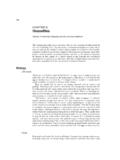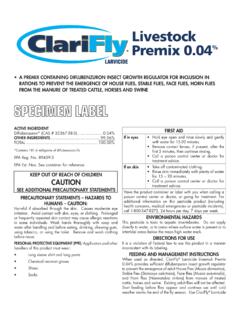Transcription of Can the Kiwi Fly? Achieving Productivity Lift-o in New Zealand
1 Can the Kiwi Fly? AchievingProductivity Lift-off in NewZealandPaul Conway1 New Zealand Productivity CommissionABSTRACTNew Zealand s poor long-run Productivity performance has puzzled domesticeconomists and international observers for decades. To provide answers, thisarticle sketches out the broad reasons why lifting Productivity has proven sodifficult. Against the background of ongoing changes in technology and in theglobal trading environment, the article also puts forward a number of high-levelpolicy suggestions aimed at countering the economic forces that have constrainedproductivity, including opening the economy to new opportunities for interna-tional connection, and encouraging capital deepening, greater competition andmore effective innovation. Getting this right requires a deep understanding ofNew Zealand s Productivity track record and potential in the 21st century globaleconomy and presents a major challenge for the New Zealand public living standards in New Zealandwere once among the highest in the 1950, GDP per capita in New Zealandwas around 125 per cent of the OECD average (Conway and Orr, 2000).
2 At thistime, colonial ties to the United Kingdomprovided easy access to capital, expertise,and a secure market for New Zealand sagricultural exports at guaranteed facilitated specialization and scale inan area of strong comparative economy was highly concentrated inthe production and processing of primaryproducts and much of the policy andinstitutional focus was on distributingwealth generated from these activities acrossthe the 1960s, New Zealand s relativestandard of living began to slip as exportrevenues became insufficient for a growingpopulation and volatile commodity marketshighlighted the vulnerabilities of a narroweconomic s entry intoEurope in 1972 and widespread increasesin protectionism for agricultural productsrestricted the ability of primary producersto reap the benefits of their response, the government1 The author is Director of Economics and Research at the New Zealand Productivity Commission.
3 Hewould like to thank colleagues at the New Zealand Productivity Commission, at the OECD and twoanonymous referees for helpful comments and suggestions. He is particularly grateful to Dr GrahamScott, Commissioner at the New Zealand Productivity Commission and past Secretary of the New ZealandTreasury, for his many insights and suggestions. The opinions, findings, recommendations, and conclusionsexpressed are those of the author, not the Productivity Commission or Statistics New Zealand . 2018of the day implemented an increasinglyprotectionist and dirigist micro agendaalong with expansionary fiscal and contributed to a generalworsening in New Zealand s economicsituation and by 1980 GDP per capita hadfallen to around 90 per cent of the ,widespreaddissatisfactionwiththesystema ticunderperformance of the New Zealandeconomypromptedaperiodofcomprehen sive economic reform aimed atimproving both microeconomic efficiencyand macroeconomic stability.
4 These reformstransformed the economy from one of themost interventionist in the OECD to oneof the most open and market-based. Overthe latter part of the 1980s and into theearly 1990s, the rigours of microeconomicadjustment coincided with a deep globalrecession and a shock market collapse. In1992, GDP per capita fell to a low of around80 per cent of the OECD the post-reform period, New Zealand seconomic performance has improved andGDP per capita is currently around 90 percent of the OECD average. Since the mid-1990s, growth in hours worked per capita hasbeen strong while multi-factor Productivity (MFP) increased markedly over the , this surge in MFP faded by2000, consistent with the idea that economicreform delivered a level shift in productivitybut did not significantly increase its long-rungrowth strong growth over the1990s, and despite a low level of productivityvis-`a-vis high-income OECD economies,NewZealand slong-runproductivityperformance has been poor by is unusual within theOECD, given that lagging economieshave,in principle,greater scope forimproving Productivity more quickly thanleading Zealand s lackof Productivity catch-up is even moreperplexing given that its economic policiesare often regarded as fit for shed some light, this article outlinesrecent evidence on the underlying reasonsfor New Zealand s comparatively poor long-run Productivity performance.
5 This reviewis undertaken against the background ofa growing literature on potential reasonsfor sustained Productivity differences acrossfirms and economies, despite the expectationthat technology diffusion and marketselection effects should tend to equalizeproductivity over the outset, it is important toacknowledge that New Zealand with lowpopulation scale and density and extremegeographic isolation is not a typical , New Zealand sdevelopment path may be different from thatof larger or better-connected economies. Forexample, New Zealand s unique economicgeography might imply a development pathbased around tasks and activities that tendnot to agglomerate in large global sdistinctmixofcharacteristics also adds to the challengeof understanding the economy and ,important aspects of NewZealand s Productivity story are yet tobe researched in detail and parts of thediagnosis and policy prescription outlined inthis article are exploratory.
6 By highlightingareas of uncertainty, the article also servesas the basis of an ongoing research agendaaimed at lifting New Zealand s article proceeds as follows. Section1 outlines New Zealand s productivityperformance at the aggregate and firm 2 discusses the underlying reasonsfor slow Productivity growth in the marketsector of the New Zealand economy. Section3 focuses on the role of policy in respondingINTERNATIONALPRODUCTIVITYMONIT OR41 Chart 1: Contributions to Labour Productivity Growth in New Zealand , 1997-2017 Source: Statistics New Zealandto New Zealand s Productivity remarks are offered in Section sProductivityPerformanceAggregate Drivers of GrowthProductivity growth in New Zealand hasbeen reasonable in some years and in someindustries but has generally been weak ininternational comparison over the long with this relatively poor long-runproductivity growth performance, the levelof labour Productivity in New Zealand hasbeen well below the average of high-incomeOECD economies for some the mid-2000s, New Zealand has notsuffered the same decline in MFP growthseen in many OECD economies apart froma strong negative outturn in 2009, MFPgrowth strengthened a little post the GlobalFinancial Crisis (GFC) (Chart 1).
7 However,as in a number of OECD economies, capitaldeepening declined from the mid-2000s,leading to a softening in labour productivitygrowth. However, this labour productivityslowdown has been comparatively minor andNew Zealand s decline in labour productivityrelative to high-income OECD economiescame to an end in the mid-2000s (Chart 2).Although New Zealand s labour productivityhas been keeping up in the context ofa generalized Productivity slowdown acrossthe OECD, there is still no evidence of any catching up and a sizable Productivity contrast to a relatively poor long-runproductivity performance, growth in labourinput has been a key driver of GDP reliance on the labour market as adriver of economic growth has intensifiedin recent years. For example, since 2000,growth in the New Zealand labour force hasbeen more than twice the OECD average,driven by much faster growth in the working-age population and a greater increase inlabour force participation (Culling andSkilling, 2018).
8 In turn, rapid growth inthe working-age population has largely beendriven by strong immigration inflows, whileparticipation rates have increased for olderworkers and, more modestly, for females. Inaddition, hours worked per worker has fallenby less in New Zealand than in the rest ofthe OECD, adding to the overall increase inlabour of New Zealand FirmsFrom a firm perspective, New Zealand spoor long-run Productivity performance42 NUMBER34,SPRING 2018 Chart 2: New Zealand s Labour Productivity Level Relative to High-income OECDC ountries, 1991-2015 Source: OECDNote: Population-weighted average for the top 17 OECD countries for labour Productivity ,calculated using 2010 purchasing power parity exchange reflect a failure of Productivity -enhancing technologies to diffuse from firmsoperating at the global Productivity frontierto firms operating at the domestic frontierand then on to domestic laggards (OECD,2015a).
9 Weak market selection effectsthat impede the allocation of productiveresources may also contribute to pooraggregate Productivity . This includes thescope for relatively productive firms togrow, and the incentives faced by relativelyunproductive firms to shrink and a rough indicator of poor technologydiffusion, MFP growth has generally beenmuch weaker in firms operating at the NewZealand Productivity frontier than in firmsoperating at the international frontier in thesame industry (Conway, 2016).2 This isconsistent with the idea that New Zealand smost productive firms struggle to learn fromglobal frontier firms in the same lack of a cohort of leading firms withfast Productivity growth is also apparentin the distribution of MFP across NewZealand firms, which has been remarkablystable (Chart 3).This contrasts withthe recent experience in a number ofother OECD economies in which leadinghigh- Productivity firms have pulled furtherahead of lagging stable,New Zealand s Productivity distribution isextremely wide in international comparison,with top-decile firms producing aroundseven times more output per unit of inputthan firms in the lowest coexistence of high and low- Productivity firms may point to weaktechnology diffusion within the , Meehan and Zheng(2015)findevidenceofproductivitycon vergence across manufacturing firms,but very slow or no convergence in parts of2 Given the difficulties in measuring technology, the globally most productive firms are assumed to operatewith the globally most advanced technologies (OECD, 2015a).
10 The most productive domestic andinternational firms are defined as firms in the top 5 per cent of the respective industry-level 3: Firm-level Multifactor Productivity Distribution in New Zealand ,2001-2012 Source: New Zealand Productivity Commission services sector and in the constructionindustry, which dominate in swideandstableproductivity distribution may also reflectweak market selection effects that allowlow- Productivity firms to survive in partsof the , firms in thelower two quartiles of the productivitydistribution in their industry account fora larger share of employment and capitalcompared to firms in the upper two quartiles(Panel A in Chart 4). This contrasts withthe pattern in a number of other OECD economies in which firm Productivity andsize distributions are positively well as weak competition that allowslow- Productivity firms to survive, thisresult may also reflect size constraints forrelatively productive firms operating in NewZealand s small domestic , employment growth overthe 2000s was weighted towards relativelyproductive firms, although capital tends toflow to relatively unproductive firms (PanelB in Chart 4) (Meehan, 2018).











